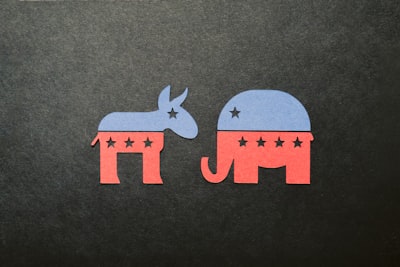Summary
On June 30, 2025, Senate Republicans made a determined effort to pass President Donald Trump’s extensive tax-cut and spending bill, despite facing party infighting and harsh criticism from Democrats. The bill would extend the landmark 2017 tax cuts, reduce some additional taxes, ramp up military and border spending, and crucially, raise the U.S. debt ceiling by $5 trillion. However, the Congressional Budget Office (CBO) projects that these measures would add $3.3 trillion to the national debt, and leave nearly 12 million more Americans uninsured, largely due to proposed Medicaid cuts. The bill narrowly cleared a procedural hurdle in the Senate and is headed for contentious debate marked by Democratic attempts to derail it and Republican worries about fiscal blowback.
Analysis
This legislative push lays bare deep ideological rifts within the Republican Party. On one side, fiscal hawks like Rand Paul express alarm at the bill’s massive increase to the debt limit—$5 trillion, an unprecedented sum—and the long-term impact on the nation's financial stability. Others, such as Senator Thom Tillis, oppose the bill for its steep cuts to social safety nets like Medicaid and clean energy programs. This highlights how internal party consensus is often challenged when rhetoric meets the realities of lawmaking, especially with the stakes so high.
The Republican leadership’s defense is to claim that continuing the 2017 tax cuts "doesn't add to the debt," a statement not borne out by nonpartisan budget math. Their willingness to use alternative accounting methods—described by critics as a “magic trick”—underscores the ongoing contest over not just policy but the very definition of fiscal reality. The framing choices in this debate are striking: Republicans stress support for families and small businesses, while Democrats focus on the tangible human costs—lost health care, higher living expenses, and widened inequality.
Discussion
What’s at stake isn’t just partisan point-scoring; it's a high-stakes bet for America’s economic and social trajectory. The bill interlocks tax policy with Medicaid rollbacks, military funding, and immigration measures, making it a sprawling “megabill.” Such bundling can force lawmakers to swallow bitter compromises, but it also muddles public debate and accountability.
This moment echoes similar inflection points in U.S. fiscal history: the Bush tax cuts of the 2000s, the 2011 debt ceiling standoff, the 2017 GOP tax overhaul—all periods marked by high drama, ideological brinkmanship, and outsized consequences. The ongoing battle over how, or even whether, to pay for tax cuts remains unresolved—as does the nation’s willingness to make hard choices about social priorities versus fiscal restraint.
Looking forward, a critical question arises: Can Congress continue to enact deep tax breaks and major spending hikes while simply lifting borrowing limits—without reckoning with the eventual economic or political costs? Amid rising national debt and global bond market jitters, this strategy looks increasingly risky. Finally, the bill spotlights the perennial tension between economic growth and societal equity, and asks Americans to consider which version of prosperity they wish to pursue.
Keywords:
- Trump tax cuts
- U.S. Senate
- national debt
- Medicaid cuts
- Congressional Budget Office
- fiscal policy
- Republican party divisions
- legislative process
- economic inequality
- government spending
Writing Style: Analytical, Engaging, Reflective
Category: U.S. Politics / Policy Analysis
Why Read: To understand the deep political and policy rifts shaping America’s fiscal future, and to see how headline battles over taxes and spending reveal the country’s core values—and vulnerabilities.
Target Audience: Readers interested in U.S. politics, policy wonks, students of government, journalists, and anyone concerned about the intersection of economics and public life.
Language: English

Comments
No comments yet. Be the first to comment!